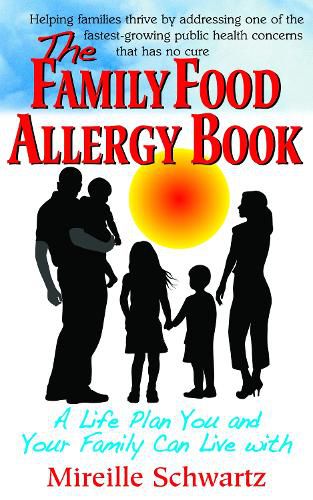Readings Newsletter
Become a Readings Member to make your shopping experience even easier.
Sign in or sign up for free!
You’re not far away from qualifying for FREE standard shipping within Australia
You’ve qualified for FREE standard shipping within Australia
The cart is loading…






Food allergies affect millions of people including children and currently there are no known ‘cures’ for these allergic reactions. The eight primary food allergies are to milk, eggs, wheat, soy, peanuts, tree nuts, fish and shellfish, though someone may, also, be allergic to medication. Even trace amounts of a food allergen can cause a reaction. Symptoms like breathing difficulties, trouble swallowing, fainting or sharp increase in heart rate usually show up within minutes of exposure, though some take several hours or even twenty-four hours. So early identification and strict avoidance of known food allergens are essential to prevent serious health consequences. Schwartz recommends observing children carefully for patterns and discussing them with your paediatrician. A colicky baby might be allergic to milk or a nappy rash might show up every time after an infant eats eggs. Skin and blood tests are essential for a definitive diagnosis. After Schwartz details the obvious and hidden sources of the eight main types of food allergies and shares savvy allergen-avoidance techniques, she devotes five chapters to various challenges and how to cope with them, in schools and restaurants, on public transport and other enclosed spaces and during family holidays. Another chapter is chock-full of recipes like chewy granola bars, made without nuts or wheat and homemade vanilla ice cream, made without milk. Besides providing a wealth of helpful advice, Schwartz’s overall message is supportive and positive: It’s absolutely possible to live a full, active life with your food allergies.
$9.00 standard shipping within Australia
FREE standard shipping within Australia for orders over $100.00
Express & International shipping calculated at checkout
Food allergies affect millions of people including children and currently there are no known ‘cures’ for these allergic reactions. The eight primary food allergies are to milk, eggs, wheat, soy, peanuts, tree nuts, fish and shellfish, though someone may, also, be allergic to medication. Even trace amounts of a food allergen can cause a reaction. Symptoms like breathing difficulties, trouble swallowing, fainting or sharp increase in heart rate usually show up within minutes of exposure, though some take several hours or even twenty-four hours. So early identification and strict avoidance of known food allergens are essential to prevent serious health consequences. Schwartz recommends observing children carefully for patterns and discussing them with your paediatrician. A colicky baby might be allergic to milk or a nappy rash might show up every time after an infant eats eggs. Skin and blood tests are essential for a definitive diagnosis. After Schwartz details the obvious and hidden sources of the eight main types of food allergies and shares savvy allergen-avoidance techniques, she devotes five chapters to various challenges and how to cope with them, in schools and restaurants, on public transport and other enclosed spaces and during family holidays. Another chapter is chock-full of recipes like chewy granola bars, made without nuts or wheat and homemade vanilla ice cream, made without milk. Besides providing a wealth of helpful advice, Schwartz’s overall message is supportive and positive: It’s absolutely possible to live a full, active life with your food allergies.